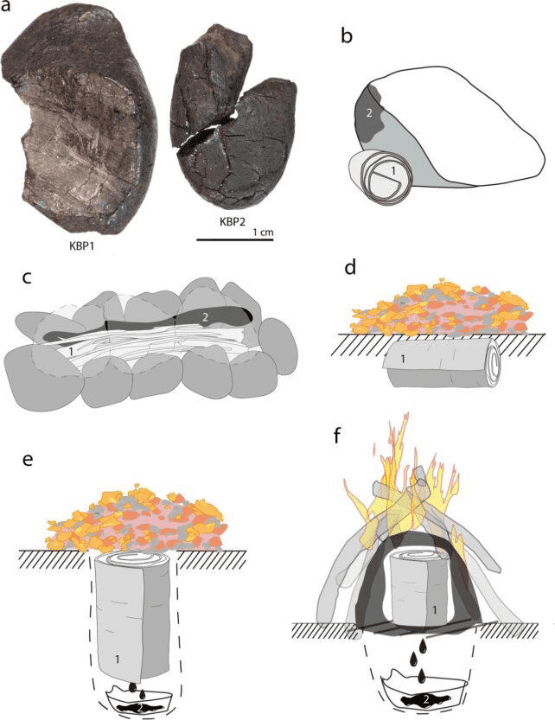It’s possible that the first synthetic substance ever made on Earth wasn’t made by our own species, but instead by a close cousin about 200,000 years ago.
Researchers from Germany’s University of Tübingen, the State Museum of Prehistory, and France’s Strasbourg University recently did a complex chemical study on Neanderthal artefacts made with birch tar. They came to the conclusion that the way the birch tar was extracted wasn’t a coincidence.
Birch tar is a sticky, black goo that has been used for thousands of years as a glue, to keep water away, and even to kill germs. It was used by some of the first people to live in Europe to hold parts of their tools together.
The material can be taken out of birch bark by heating it, but experts aren’t sure if Neanderthals did this on purpose or if it was just a side effect of having a fire.
Some people think that Neanderthals just scraped black tar off the rocks around them after burning birch bark. Others think that the sticky, water-resistant material was carefully made in an underground oven long before our species learned the trick.
This may seem like a small point, but making useful substances on purpose from raw materials is thought to be another thing that sets humans apart from other species in terms of intelligence.
Based on the analysis of two pieces of birch tar found at an archaeological site in Germany, this latest study says that “birch tar may document advanced technology, forward planning, and cultural capacity in Neanderthals.”
An analysis of the chemistry of the artefacts shows that they were made without oxygen. Theoretically, there were a few ways to get this low-oxygen profile, so experts tried them all.
Two of the ways involved burning birch bark above ground, while the other three used something like an underground oven.
When birch bark was burned above ground, the tar would collect on the tops of stones or a cap made of sticks. The below-ground ways mostly involved putting rolled-up birch bark in a hole and lighting it on fire.

In the end, only birch tar made underground from birch trees had the same chemical fingerprint as the old things found in Germany.
The results show that Neanderthal tar was not the “haphazard result of unintentional processes in open-air fires,” but rather a complicated underground process that had to be carefully planned because it could not be watched once it was buried.
For such a complicated setup, you would have needed to follow a plan exactly. Researchers say that the practise was probably made by trying things out and seeing what worked and what didn’t.
If Neanderthals really made tar as long ago as 200,000 years ago, that is 100,000 years older than any evidence that Homo humans made tar.So, experts write, “we show for the first time that Neanderthals came up with and improved a way to change things, most likely without any help from Homo sapiens.”
Past findings have shown that the Neanderthals had a complicated diet with many steps for preparing food. But they might not have only used fire for warmth or cooking.
We shouldn’t underestimate how smart our ancestors were anymore.
Archaeological and Anthropological Sciences is where the work was written up.
- Tiger Woods Expected to Sidelined Until 2026 Following Achilles Surgery, Says Top Physio
- The Ultimate Running 5K Training Plan for Beginners
- India’s Shocking Case: Teen Girl Dies After Following Dangerous YouTube Weight Loss Regimen
- Ukraine got more than $100 million for air defense
- Phil Mickelson’s Best Finish in LIV Golf: Aiming for Another Major Championship Win









Comments are closed.